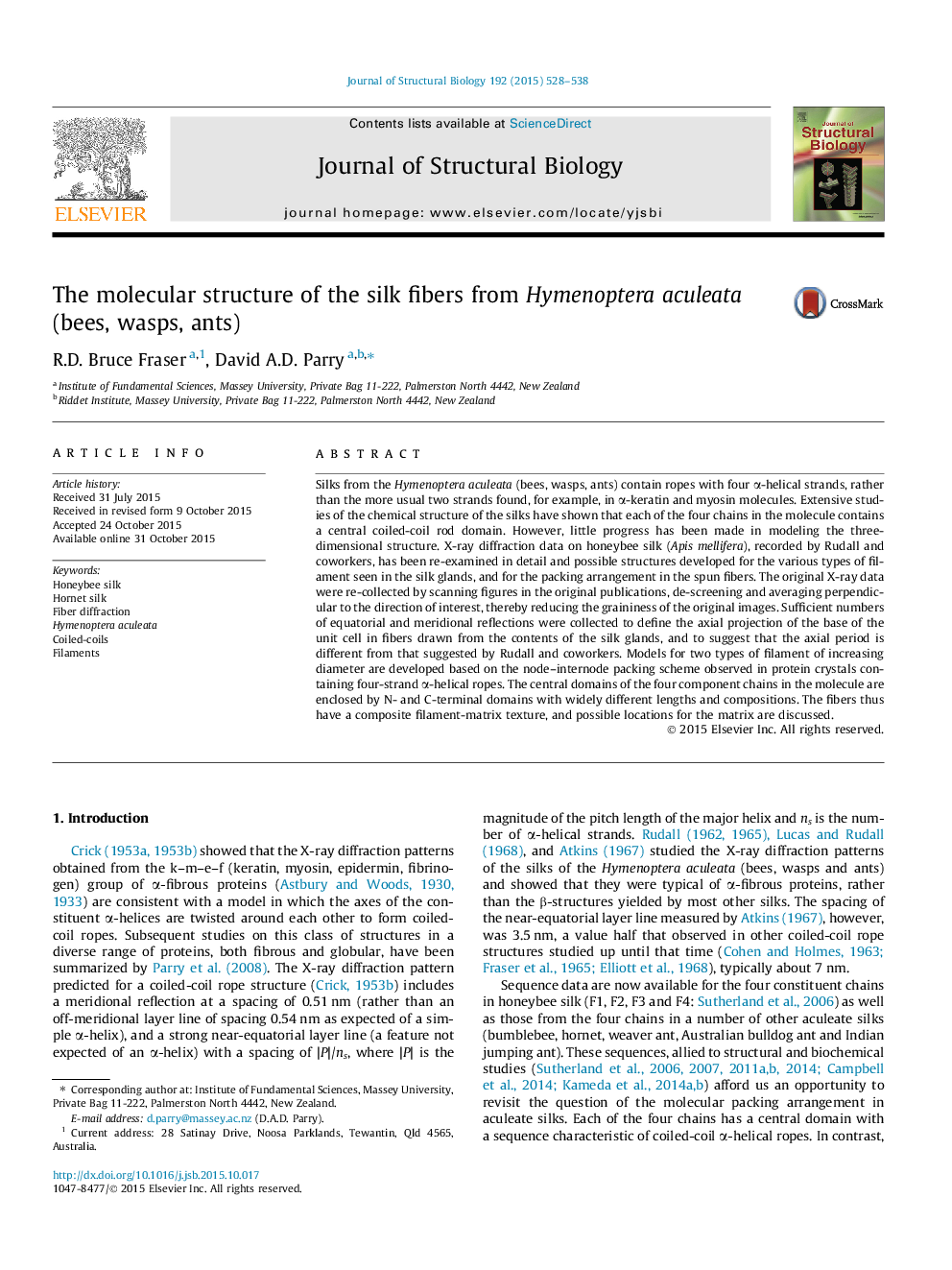| Article ID | Journal | Published Year | Pages | File Type |
|---|---|---|---|---|
| 5913685 | Journal of Structural Biology | 2015 | 11 Pages |
Abstract
Silks from the Hymenoptera aculeata (bees, wasps, ants) contain ropes with four α-helical strands, rather than the more usual two strands found, for example, in α-keratin and myosin molecules. Extensive studies of the chemical structure of the silks have shown that each of the four chains in the molecule contains a central coiled-coil rod domain. However, little progress has been made in modeling the three-dimensional structure. X-ray diffraction data on honeybee silk (Apis mellifera), recorded by Rudall and coworkers, has been re-examined in detail and possible structures developed for the various types of filament seen in the silk glands, and for the packing arrangement in the spun fibers. The original X-ray data were re-collected by scanning figures in the original publications, de-screening and averaging perpendicular to the direction of interest, thereby reducing the graininess of the original images. Sufficient numbers of equatorial and meridional reflections were collected to define the axial projection of the base of the unit cell in fibers drawn from the contents of the silk glands, and to suggest that the axial period is different from that suggested by Rudall and coworkers. Models for two types of filament of increasing diameter are developed based on the node-internode packing scheme observed in protein crystals containing four-strand α-helical ropes. The central domains of the four component chains in the molecule are enclosed by N- and C-terminal domains with widely different lengths and compositions. The fibers thus have a composite filament-matrix texture, and possible locations for the matrix are discussed.
Related Topics
Life Sciences
Biochemistry, Genetics and Molecular Biology
Molecular Biology
Authors
R.D. Bruce Fraser, David A.D. Parry,
